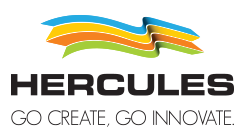How Color Theory Impacts Logo Colors

How Color Theory Impacts Logo Colors
Starting a new business is an exhilarating time, and the thing most new business owners want to get to right away is create the perfect logo so they can launch in style. However, while it’s easy to recognize the impact of a great logo (the golden arches of McDonald’s, the Nike swoosh, the Salesforce cloud), it can be challenging to nail impact and simplicity like these icons.
Research has shown that before you see the words, you see the color of the logo. That color register triggers emotion and association even before the viewer has time to read. This article will cover the basics of brand color psychology, color theory, and how to go about successful logo color combinations.
What is Brand Color Psychology?
All colors are tied to some emotion or product. The particular meaning will vary across cultures and situations, so this piece focuses on popular Western ideas. Here are a few examples of typical uses of color in popular brands:
● Red: this bold color is unsurprisingly used in passionate and energetic marketing– what you may not have realized is that it’s also associated with discount products. That’s why it’s popular in many retail food industries.
● Yellow: bright and sunshiny, yellow inspires confidence and happiness. McDonald’s has cornered the market on the yellow arches.
● Orange: this color is difficult to nail, but done correctly, grabs attention, and produces excitement. FedEx has paired this bright color with purple to ground it.
● Green: a calming color that is associated most often with health and eco-friendliness. Subway and Animal Planet.
● Blue: inspires trust, loyalty, confidence, and intelligence, so it is frequently associated with financial and technological brands, like Chase Bank and Samsung.
● Purple: this color evokes luxury and class, making it perfect for brands like Cadbury chocolate and Purple Mattress.
What is Color Theory?
The color theory describes three tiers of colors in the color wheel and explains how they complement each other. The three tiers are primary, secondary, and tertiary colors.
● Primary colors are the base of all others and include red, yellow, and blue.
● Secondary colors are the mixes of these colors: orange, green, and purple.
● Tertiary colors go a step further to blend adjacent colors to another level.
How to Pick Logo Color Combinations?
It can be tempting to include many colors to catch viewers. However, while Google has successfully captured the rainbow in its logo, it’s pretty hard to do. In fact, 95% of brands only use two colors, and quite often, the second color is white. A great way to decide your colors is to start with your niche and determine your first color. Then you can use a basic color wheel to compare primary and secondary colors to get the right match if you choose another color.
Ready to Design Your Logo?
Achieving simplicity and impact is an art form. The Hercules Group can help you work through color choices, as we’ve worked with hundreds of clients in printing their logo on anything.
